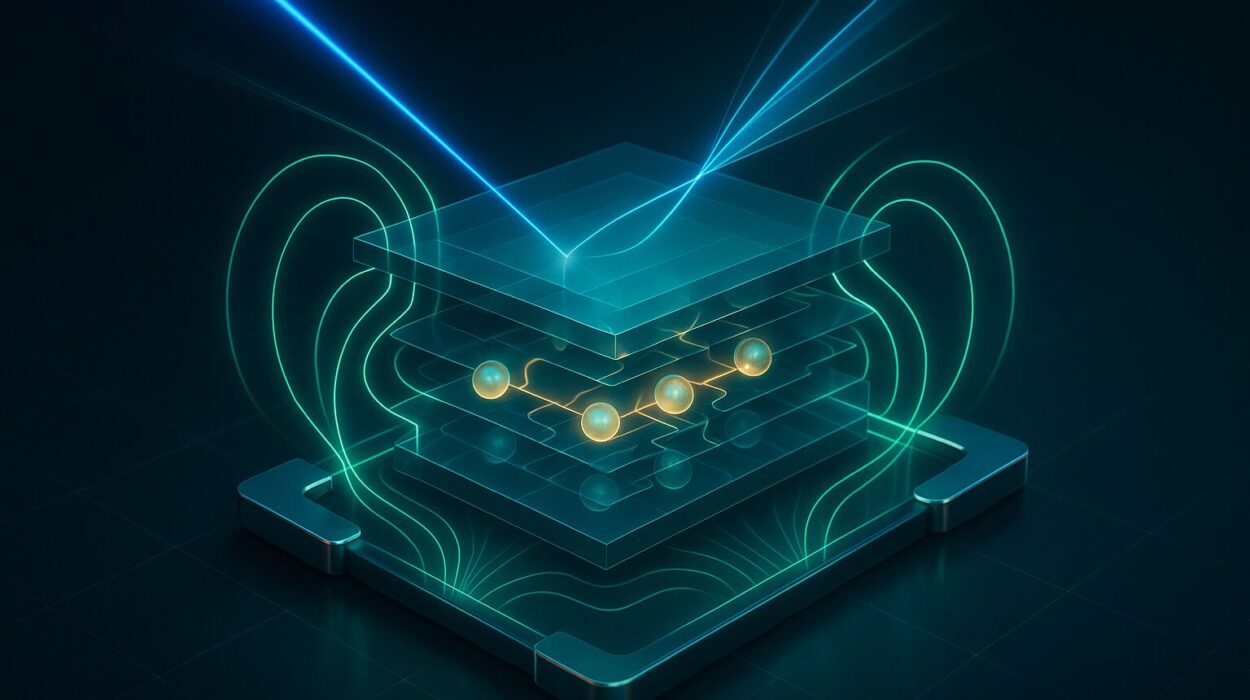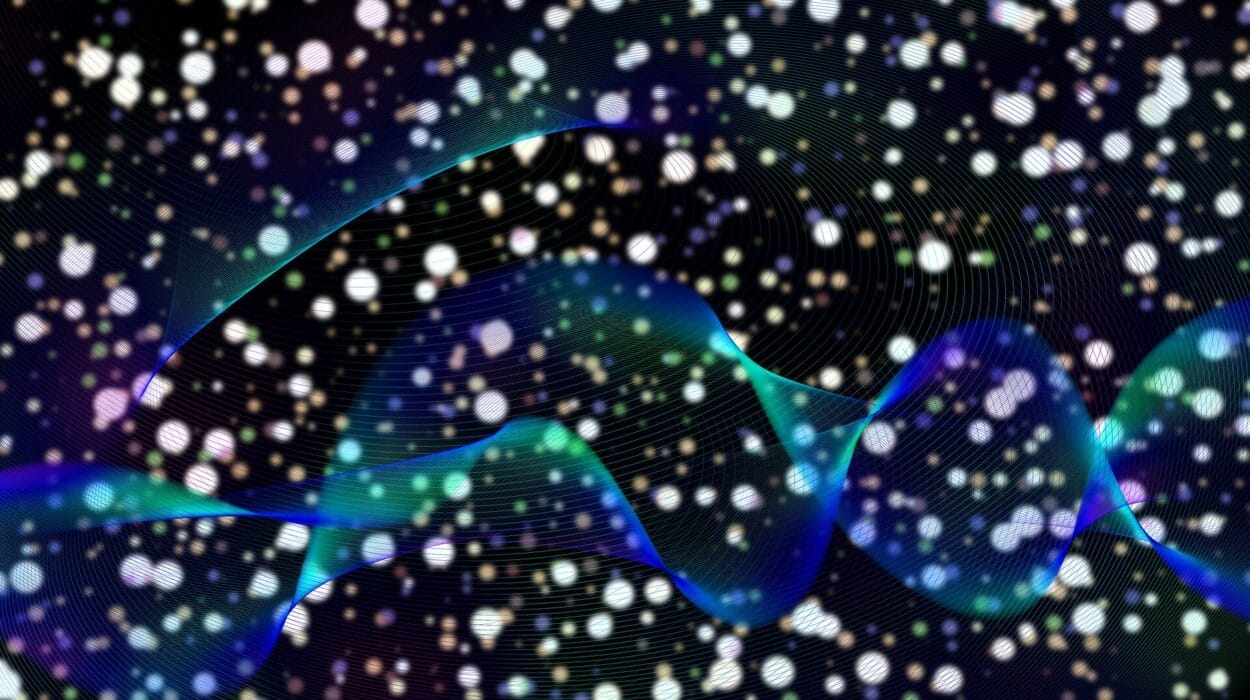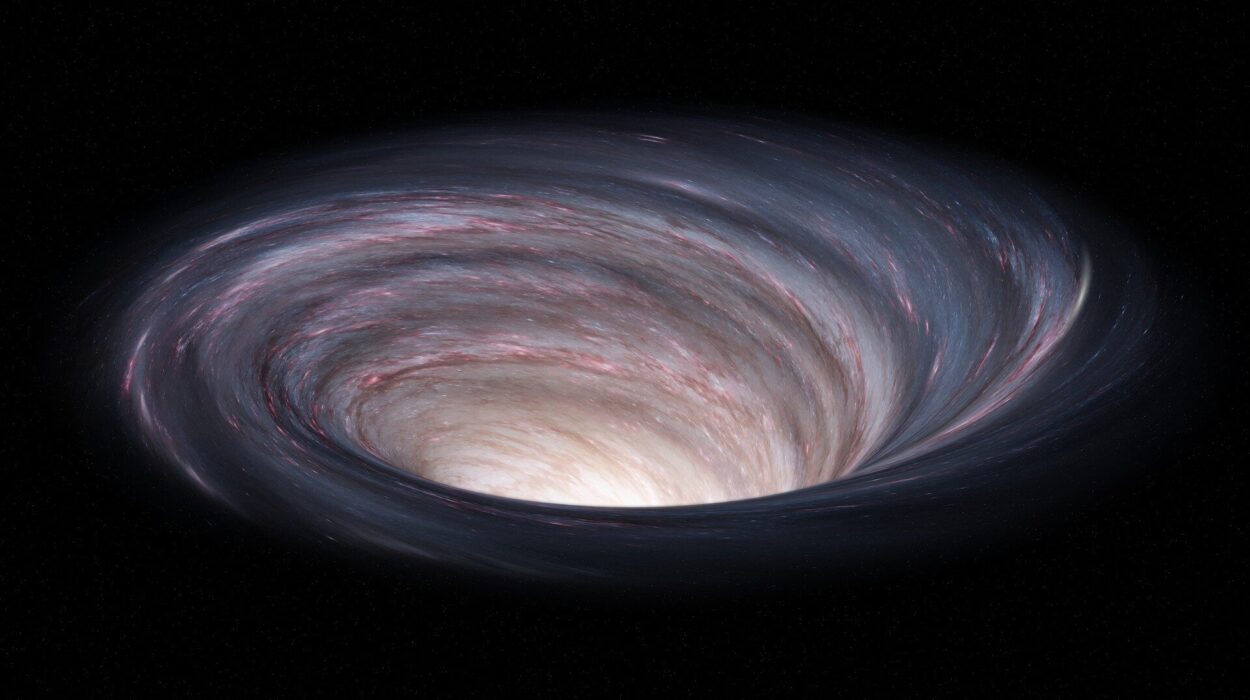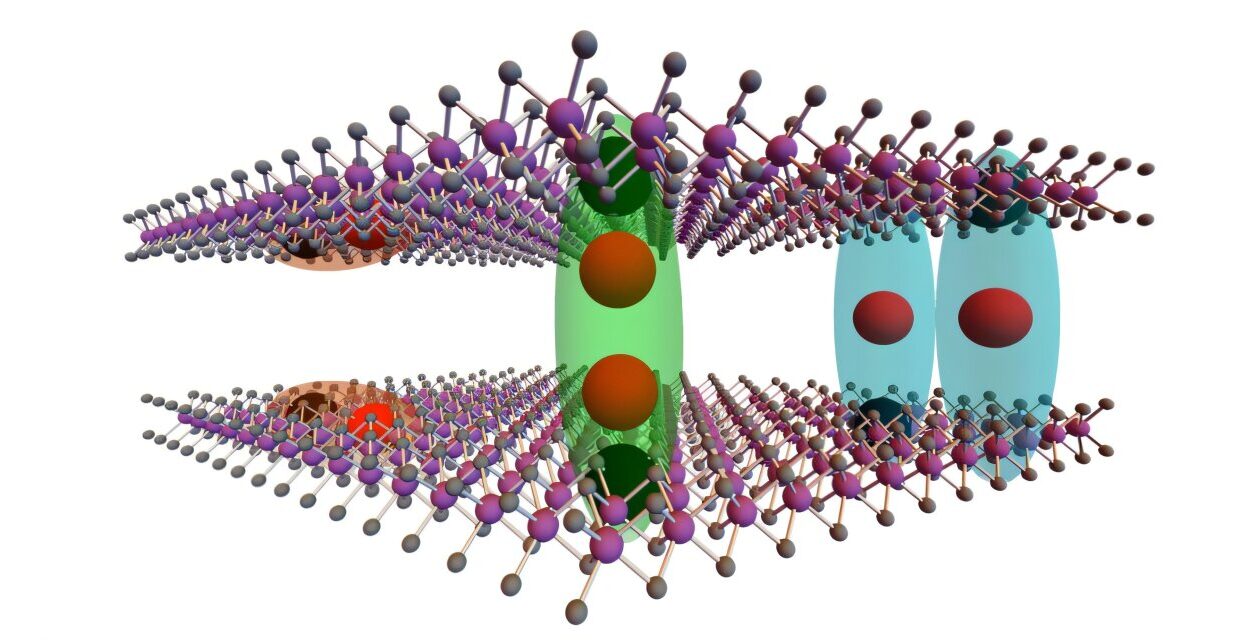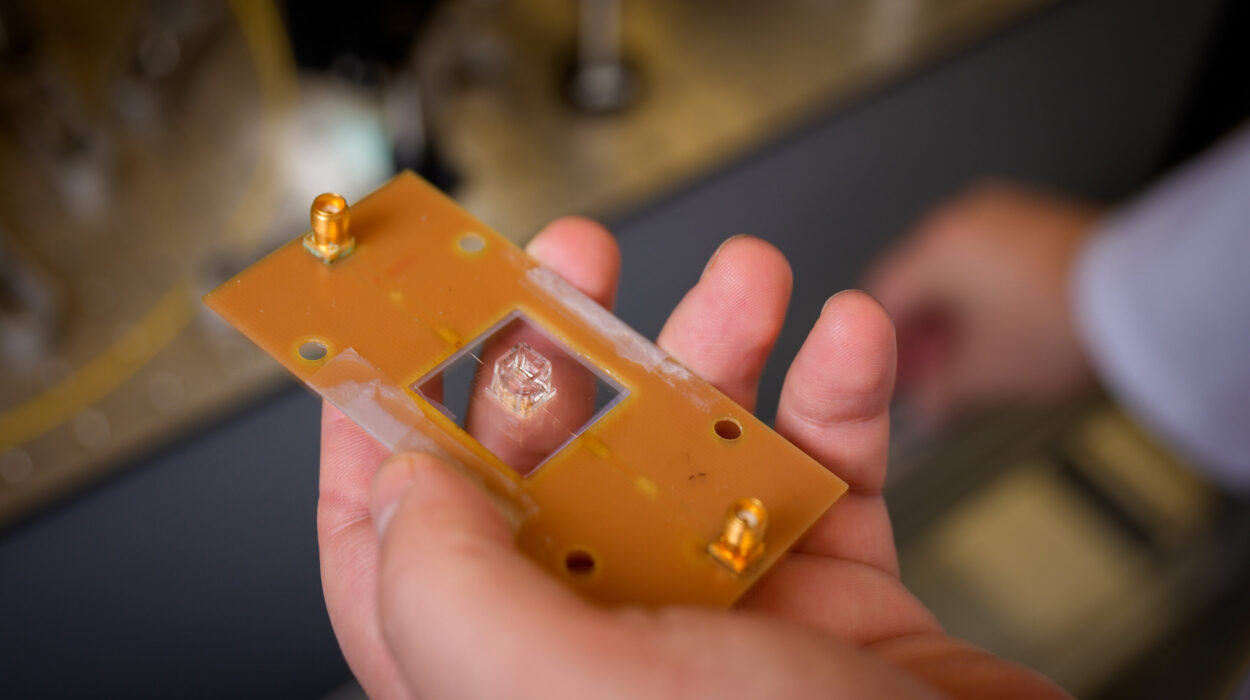A team of researchers from the Universities of Würzburg and Dresden, collaborating with international partners, has made a remarkable breakthrough in the realm of quantum materials. For the first time, they have experimentally demonstrated the existence of a quantum tornado—a swirling vortex of electrons in momentum space. This discovery, published in Physical Review X, represents a significant advancement in the study of quantum semimetals, particularly tantalum arsenide (TaAs), and may hold the key to the development of next-generation quantum technologies.
What is a Quantum Tornado?
The phenomenon of a quantum tornado, first theorized eight years ago by physicist Roderich Moessner at the Cluster of Excellence ct.qmat in Dresden, involves electrons in momentum space behaving like swirling vortices—much like the way a tornado moves through the air. The groundbreaking achievement of demonstrating this quantum tornado experimentally was led by Dr. Maximilian Ünzelmann, a group leader at ct.qmat—Complexity and Topology in Quantum Matter, at the Universities of Würzburg and Dresden.
Unlike classical vortices, such as those seen in water or air, the quantum tornado occurs in the abstract, higher-dimensional momentum space. This contrasts with position space, where familiar physical phenomena like water vortices or hurricanes occur. In momentum space, particles like electrons are not represented by their physical locations, but rather by their energy and direction of motion. The discovery of this quantum tornado in momentum space opens new frontiers in our understanding of quantum behavior at the microscopic scale.
The Promise of Quantum Tornadoes for Future Technologies
This discovery marks a key milestone in the field of quantum materials. The team’s findings may lead to the development of orbitronics—a novel field of quantum technology that could exploit electrons’ orbital angular momentum to transmit information in a manner similar to traditional electronics but without relying on electrical charge. If successfully harnessed, this approach could drastically reduce energy losses in electronic components by utilizing orbital torque instead of charge transfer.
The concept of orbitronics builds on the idea that electrons possess not only charge but also an intrinsic orbital angular momentum as they move around atomic nuclei. In a typical quantum material, this angular momentum is thought to be pivotal in controlling the flow of information. The newly discovered quantum tornado is a demonstration of how this orbital angular momentum can manifest itself as a vortex-like structure in momentum space, suggesting the potential for a new class of technologies that could rival or even surpass conventional electronics in energy efficiency.
Momentum Space vs. Position Space
To fully appreciate the significance of this discovery, it’s crucial to understand the distinction between momentum space and position space in physics. In position space, we describe particles in terms of their physical location, such as the positions of planets or the movement of water in a river. This is the kind of space where we observe everyday phenomena, including the formation of whirlpools and tornadoes.
In contrast, momentum space describes the properties of particles in terms of their energy and motion. Instead of focusing on where particles are located, momentum space considers their velocity, direction, and energy. In quantum mechanics, momentum space is especially important when analyzing how particles behave in systems governed by quantum principles.
Historically, physicists have observed vortices in position space in various quantum materials, including in magnetic fields. However, the discovery of vortices in momentum space represents an entirely new and uncharted territory, providing fresh insight into the quantum world.
The Theoretical Prediction of Quantum Tornadoes
The concept of a quantum tornado in momentum space was first proposed by Roderich Moessner, a co-founder of ct.qmat, in 2015. Moessner’s initial theoretical work described this phenomenon as a “smoke ring,” a term used to illustrate the swirling vortex structure of the quantum tornado. His theory speculated that such vortices could emerge in the behavior of electrons under certain conditions, but no one knew how to measure them—until now.
The theoretical model described that the quantum tornado would arise due to the orbital angular momentum of electrons, which is their tendency to move in circular or spiral paths around atomic nuclei. Moessner predicted that these circulating electron paths could form a vortex-like structure in momentum space, much like a tornado in the atmosphere. However, despite the theoretical prediction, experimental proof was elusive, until the Würzburg and Dresden team’s groundbreaking work made this phenomenon visible for the first time.
How the Quantum Tornado Was Detected
The experimental detection of the quantum tornado in momentum space was made possible by enhancing a well-established technique known as angle-resolved photoemission spectroscopy (ARPES). ARPES is an experimental method widely used in solid-state physics to study the electronic structure of materials. The technique involves shining light onto a material sample, which causes electrons to be emitted from the material. By measuring the energy and exit angle of these electrons, scientists can gain insights into the material’s electronic properties in momentum space.
Dr. Ünzelmann and his team used ARPES, but with a twist. They refined the method by incorporating a process called quantum tomography, similar to how medical tomography reconstructs images of internal structures layer by layer. By applying this technique to tantalum arsenide, they were able to measure the orbital angular momentum of electrons and identify the quantum tornado’s structure in three dimensions.
“This breakthrough experiment allowed us to directly visualize the electron vortices that were predicted,” says Dr. Ünzelmann. “By analyzing the sample layer by layer and stitching together the data, we reconstructed the three-dimensional structure of the quantum tornado. This was a monumental step forward in our ability to observe quantum phenomena.”
Collaborations Across the Globe
The successful detection of the quantum tornado is the result of collaboration between multiple research institutions. The tantalum arsenide sample used in the experiments was grown in the United States and subsequently analyzed at PETRA III, a major international research facility located at the German Electron Synchrotron (DESY) in Hamburg, Germany.
The research team’s work also benefited from the contributions of international collaborators. A theoretical physicist from China helped with the modeling of the quantum tornado, while a researcher from Norway played a critical role in the experimental aspects of the project.
Matthias Vojta, Professor of Theoretical Solid-State Physics at TU Dresden and ct.qmat’s spokesperson for Dresden, highlighted the importance of the collaborative efforts. “The experimental detection of the quantum tornado is a true testament to the spirit of teamwork fostered within ct.qmat. By seamlessly integrating theory and experiment across institutions and countries, we have been able to push the boundaries of quantum materials research.”
Looking Ahead: Orbitronics and Quantum Materials
The discovery of the quantum tornado is not the end of the journey for the researchers at ct.qmat. Looking forward, they are now focused on exploring how the unique properties of tantalum arsenide—which exhibits strong electron correlation effects and topological features—could be harnessed for future quantum technologies.
One of the most exciting possibilities is the development of orbital quantum components. These components could potentially use the electron’s orbital angular momentum for the transmission of information, creating faster, more energy-efficient electronics. By controlling the quantum tornado and the vortices in momentum space, the team hopes to unlock new avenues for the development of quantum circuits and quantum computing, fields that hold the promise of revolutionizing everything from computing to secure communications.
Conclusion
The experimental demonstration of a quantum tornado in momentum space marks a pivotal moment in the study of quantum materials. It represents not only a direct validation of a long-standing theoretical prediction but also a crucial step toward the realization of new quantum technologies, such as orbitronics, that could redefine how we think about electronic components and information processing. As quantum research continues to evolve, discoveries like these bring us closer to a future where quantum phenomena are harnessed for practical, transformative applications in technology and beyond.
Reference: T. Figgemeier et al, Imaging Orbital Vortex Lines in Three-Dimensional Momentum Space, Physical Review X (2025). DOI: 10.1103/PhysRevX.15.011032

